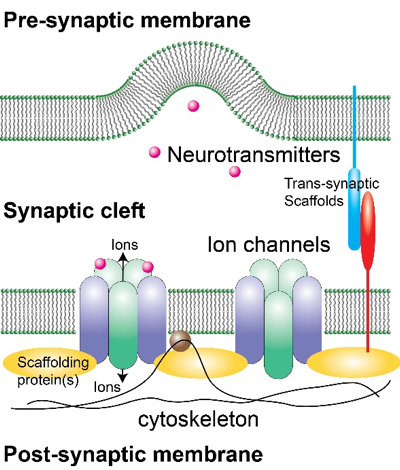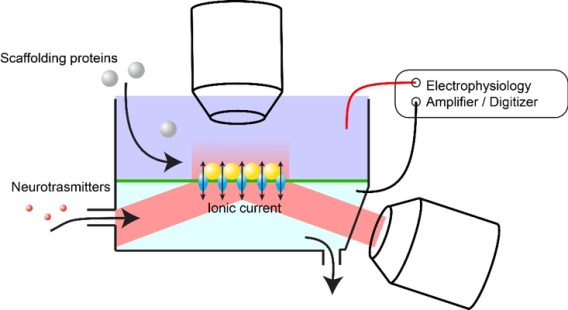In our body, electricity is used by multiple cell types to store and transmit information. For example, neuronal cells in our brain form inter-cellular junctions that pass along electrical signals to process information and store memory. Peripheral neuronal cells also form junctions with muscles cells to keep vital functions including heart beat and breathing, as well as control the movement of our limbs. The efficiencies of such junctions determine how well signals are passed alone and underlies information storage. Ion channels are trans-membrane proteins that enable the use of electricity. They are clustered by scaffolding proteins at these junctions. Such clusters determine the types and quantity of ion channels at the junctions, affecting the junction efficiency and, in turn, information storage and transmission. Although much is known about how individual ion channels work, knowledge of the ion channel clusters is very limited. Neither the structure / spacial organization of such clusters nor the functional property is known.

To study such clusters without the complications arising from the complex cellular environment, we purify the components from cells and study them in vitro. Purified ion channels can be re-inserted into artificial membranes which allows us to measure the ion conduction in the absence or presence of the scaffolding proteins that lead to cluster formation. At the same time, we are developing a fluorescence microscopy method that allows us to watch the formation and dynamics of clusters down to single-molecule level when measuring electrical current. Being able to correlate the fluorescence microscopy with electrical recordings allows unambiguous understanding of how clustering affects signal transduction.

To understand the spacial organization of such clusters at higher resolution, we use cryo-Electron Microscopy methods to investigate the structure of such clusters. The structures of the building blocks of such clusters are resolved using the single-particle reconstruction method while the electron-tomography method will be used to study the sub-micro sized clusters.
